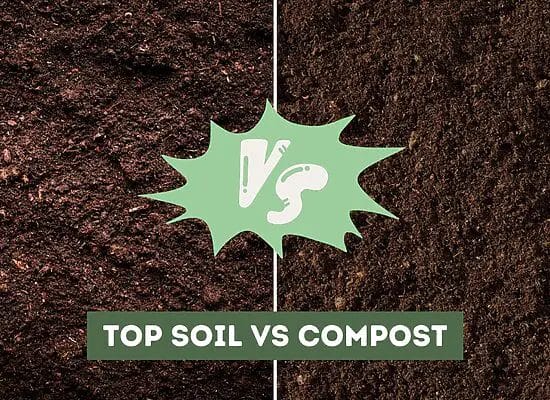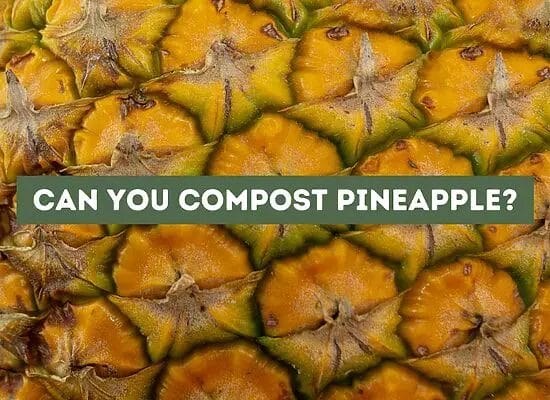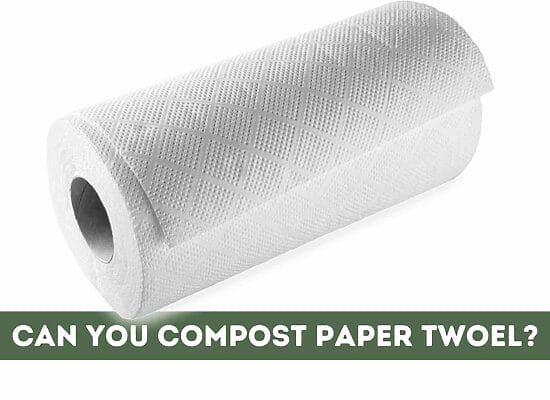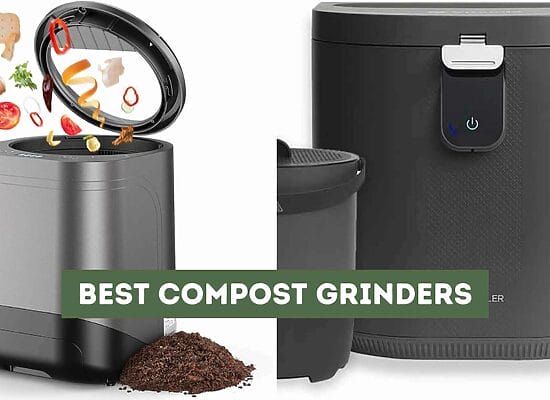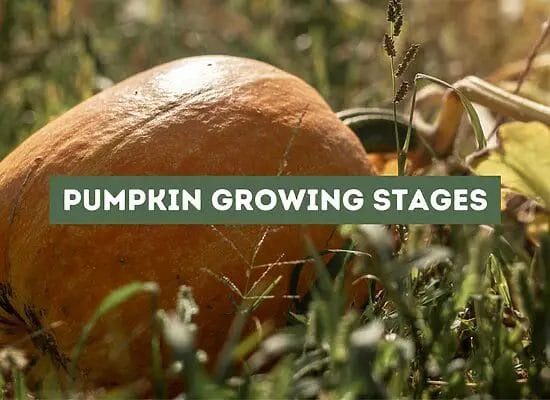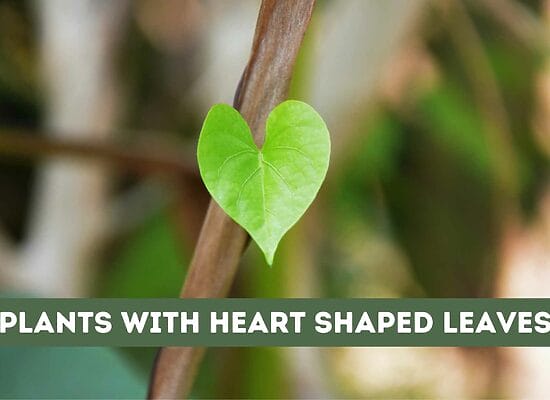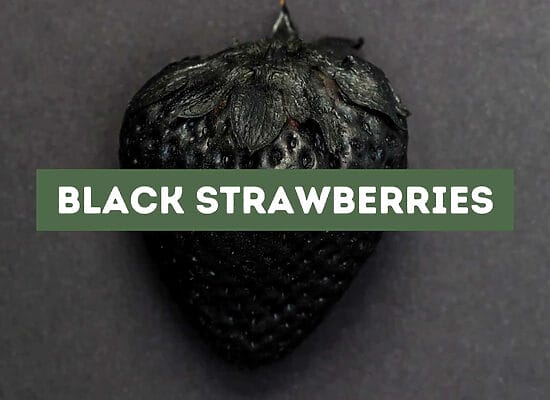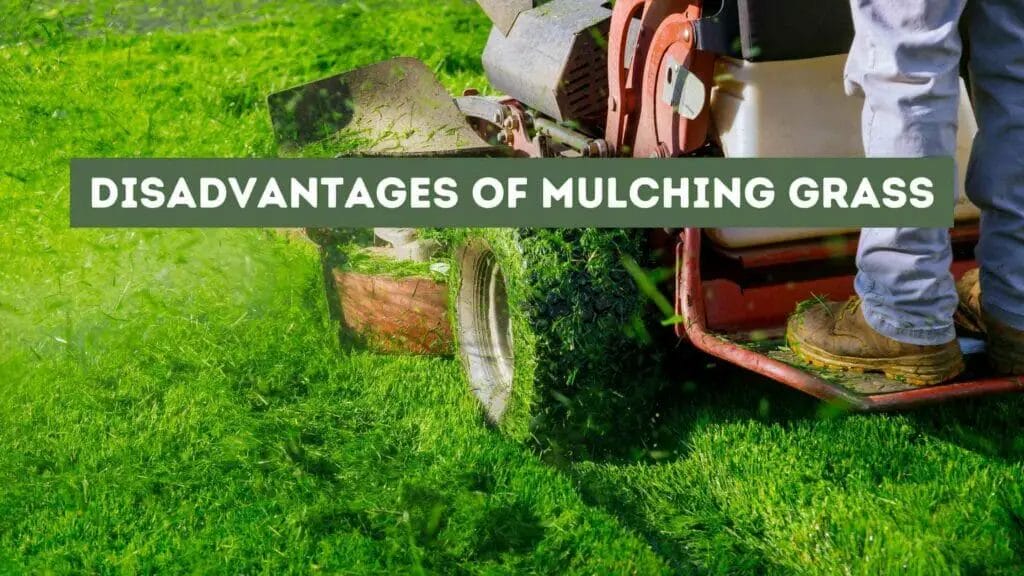
Maintaining a lush green lawn is a dream for every homeowner, and mulching is an effective way to achieve it. Mulching is the process of leaving grass clippings on the lawn after mowing, which can provide nutrients to the soil and help the grass grow healthier. However, while mulching has its advantages, it also has some disadvantages that you should be aware of.
One of the major disadvantages of mulching grass is that it can take longer to mow your lawn. If you don’t mow your lawn regularly, mulching can leave behind long grass clippings that can mat together and form hydrogen sulfide gas, which is toxic to people and pets and can cause respiratory problems.
Additionally, mulching can attract pests, such as rats and snakes, which can damage your lawn and pose a threat to your family and pets. Understanding these disadvantages can help you make an informed decision about whether mulching is the right choice for your lawn.
Key takeaways:
- Mulching grass can take longer to mow your lawn, especially if you don’t mow regularly.
- Mulching can attract pests like rats and snakes, which can damage your lawn and pose a threat to your family and pets.
- Thatch buildup is a common disadvantage of mulching, as it can prevent water and nutrients from reaching the grass roots.
- Mulching can lead to soil compaction if applied too heavily or too often, which can result in poor drainage and suffocation of the roots.
- Excessive mulching can increase weed growth, especially if low-quality mulch containing weed seeds is used.
- Mulching can cause nutrient imbalances by tying up nitrogen in the soil, leading to yellowing and less healthy grass.
- Improper mulching practices can hinder the amount of light and heat reaching your lawn, affecting grass growth and vitality.
Understanding Mulching
Mulching is a popular lawn care technique that involves spreading a layer of organic or inorganic material over the soil. Mulch can help retain moisture, regulate soil temperature, and suppress weed growth. However, there are also some disadvantages to mulching that you should be aware of.
Organic mulches are made from natural materials such as leaves, grass clippings, and wood chips. Inorganic mulches, on the other hand, are made from synthetic materials such as rubber and plastic. Organic mulches are preferred by many gardeners because they provide additional benefits to the soil, such as adding nutrients as they break down.
Mulching can be done in different ways, such as side discharge, bagging, or mulching blades. Side discharge involves mowing the lawn and discharging the grass clippings onto the lawn. Bagging involves collecting the grass clippings in a bag attached to the lawnmower. Mulching blades are designed to chop the grass clippings into smaller pieces and distribute them evenly over the lawn.
One of the main disadvantages of mulching is that it can lead to thatch buildup. Thatch is a layer of dead grass, roots, and stems that accumulates between the soil and the grass blades. This can prevent water and nutrients from reaching the roots of the grass, leading to a weak and unhealthy lawn.
Another disadvantage of mulching is that it can be time-consuming. If you don’t mow your lawn regularly, mulching can take longer as you need to make multiple passes over the lawn to ensure the grass clippings are distributed evenly.
It’s important to choose the right type of mulch for your lawn. Organic mulches are generally preferred because they provide additional benefits to the soil. However, some organic materials, such as fresh grass clippings, can create an unpleasant odor as they decompose. Inorganic mulches are more durable and can last longer, but they don’t provide any additional nutrients to the soil.
Impact of Mulching on Grass
Mulching grass can be a great way to recycle grass clippings and leaves, but it also has some potential disadvantages that you should be aware of. Here are some of the ways that mulching can impact your grass:
- Thatch buildup: One potential disadvantage of mulching is that it can cause thatch buildup, which is a layer of dead grass and other organic matter that accumulates on top of the soil. This can create a barrier that prevents water and nutrients from reaching the roots of your grass, which can lead to poor growth and health.
- Soil compaction: Another potential disadvantage of mulching is soil compaction. When mulch is applied too heavily or too often, it can create a layer of organic matter that becomes compacted over time. This can lead to waterlogging, poor drainage, and suffocation of the roots.
- Increased weed growth: Mulching can also lead to an increase in weed growth, as the organic matter provides a fertile ground for weed seeds to germinate. This can be especially problematic if you are using low-quality mulch that contains weed seeds.
- Longer mowing sessions: Finally, mulching can take longer to mow than simply bagging or side-discharging your clippings. This is because the mulch needs to be chopped into smaller pieces by your lawn mower, which can slow down the mowing process.
To minimize the impact of mulching on your grass, consider the following tips:
- Mow regularly: Mowing your lawn regularly can help prevent thatch buildup and keep your grass healthy. Aim to mow no more than one-third of the grass blade at a time, and never remove more than one-third of the total grass height in a single mowing.
- Use high-quality mulch: Using high-quality mulch that is free from weed seeds can help prevent weed growth and other problems. Look for mulches that are made from natural materials like shredded leaves or grass clippings, and avoid mulches that are made from synthetic materials or treated wood.
- Maintain your lawn mower: Keeping your lawn mower in good condition can help ensure that it is able to chop up mulch effectively and efficiently. Make sure to sharpen your mower blades regularly and clean out any debris that accumulates in the mower deck or chute.
Nutrient Imbalances Caused by Mulching
Mulching grass can provide valuable nutrients to the soil, but it can also lead to nutrient imbalances. As the grass clippings decompose, they tie up nitrogen in the soil, which can result in a lack of nitrogen for the grass. This can cause the grass to turn yellow and become less healthy.
To avoid nutrient imbalances caused by mulching, it is important to monitor the nutrient levels in your soil. You can use a soil test kit to determine the nutrient levels in your soil and adjust your fertilization accordingly.
When mulching, it is also important to use a balanced fertilizer that contains nitrogen, phosphorus, and potassium. This will help to maintain the proper nutrient levels in your soil and prevent nutrient deficiencies.
Another tip for avoiding nutrient imbalances caused by mulching is to mow your lawn regularly and not let the grass get too long. Longer grass clippings take longer to decompose and can tie up more nitrogen in the soil.
Mulching and Weed Growth
Mulching can be a great way to nourish your lawn and keep it healthy. However, it’s important to be aware of the potential disadvantages of mulching, especially when it comes to weed growth.
Mulching can reduce weed growth by keeping light from reaching the soil surface, which can prevent weed seeds from germinating. However, if mulch is not applied correctly, it can actually promote weed growth by providing a fertile environment for weed seeds to grow.
For example, if you apply too much mulch, it can create a thick layer that prevents water and air from reaching the soil. This can create a moist, humid environment that is perfect for weed growth. Similarly, if you use a mulch that contains weed seeds, you may inadvertently introduce new weeds to your lawn.
One of the most common weeds that can be promoted by mulching is crabgrass. Crabgrass is a warm-season annual weed that thrives in hot, dry conditions. It can be difficult to control once it has become established, so it’s important to take steps to prevent it from growing in the first place.
Other common lawn weeds that can be promoted by mulching include dandelions and daisies. These weeds can be unsightly and difficult to control, so it’s important to take steps to reduce their growth.
To reduce weed growth when mulching, it’s important to apply the right amount of mulch and to use a mulch that is free of weed seeds. You should also take steps to control weeds before they have a chance to grow, such as using a pre-emergent herbicide.
Pests and Diseases Related to Mulching
One of the potential disadvantages of mulching is that it can attract pests and diseases to your lawn or garden. Pests such as ants, slugs, snails, rodents, and bugs are drawn to organic mulches, which can create an environment that is conducive to their growth and reproduction.
Ants are one of the most common pests that are attracted to mulch. They are attracted to the moist, cool environment created by the mulch, and they may build their nests in the mulch itself. Ants can be harmful to plants, as they can damage roots and cause wilting.
Another pest that may be attracted to mulch is slugs and snails. These pests thrive in moist environments, and the organic matter in the mulch provides them with a perfect breeding ground. Slugs and snails can cause damage to plants by eating the leaves and stems, which can lead to stunted growth or even death.
Rodents such as mice and rats may also be attracted to mulch. They are drawn to the organic matter in the mulch, which provides them with a source of food and shelter. Rodents can cause damage to plants by eating the roots or burrowing into the soil, which can lead to poor growth and even death.
In addition to pests, mulching can also create an environment that is conducive to the growth of harmful insects and diseases. For example, excessive mulching can create a moist environment that favors the growth of fungi, which can cause root rot and other diseases.
To prevent pests and diseases from becoming a problem, it is important to choose the right type of mulch and to apply it correctly. You should also avoid piling mulch up against the trunks of trees and shrubs, as this can create a moist environment that is attractive to pests and diseases.
Disadvantages of Over-Mulching
Over-mulching, or applying too much mulch, can have negative effects on your grass. While mulch can provide many benefits, such as retaining moisture and suppressing weeds, over-mulching can lead to a variety of problems.
One of the main issues with over-mulching is that it can suffocate your grass by preventing air and water from reaching the roots. This can lead to waterlogging, poor drainage, and ultimately, the death of your grass. Additionally, over-mulching can create a hiding place for harmful insects, such as slugs and snails, which can damage your grass.
Another disadvantage of over-mulching is that it can cause excessive amounts of thatch to build up on your lawn. Thatch, a layer comprising deceased grass and other organic matter, tends to accumulate atop the soil. While a moderate amount of thatch can provide advantages, excessive buildup may impede the passage of water and essential nutrients to the roots of your grass, hindering their growth and vitality.
When it comes to how much mulch to apply, it’s important to follow the recommended guidelines. As a general rule, you should apply no more than 3 inches of mulch at a time. If you’re unsure how much mulch to apply, consult with a professional or refer to the instructions on the mulch packaging.
In addition to following the recommended guidelines, it’s also important to choose the right type of mulch for your lawn. Some types of mulch, such as wood chips, can take a long time to break down and can tie up nitrogen in the soil, which can be detrimental to your grass. Other types of mulch, such as straw or hay, can contain weed seeds that can sprout and compete with your grass.
Mulching and Soil Health
Mulching is an effective way to keep your lawn healthy and looking great, but it can also have some negative effects on soil health. While mulching can help retain moisture and reduce weed growth, it can also lead to soil compaction, poor drainage, and other issues.
One of the primary concerns with mulching is soil compaction. When mulch is applied too heavily or too often, it can create a layer of organic matter that becomes compacted over time. This can limit the amount of air and water that reaches the soil, making it more difficult for plants to grow and thrive.
Another potential issue with mulching is poor drainage. If the mulch layer is too thick, it can prevent water from draining properly, leading to waterlogging and other problems. This can be particularly problematic in areas with heavy rainfall or in poorly drained soils.
In addition to these concerns, mulching can also have an impact on soil moisture. While mulch can help retain moisture in the soil, it can also lead to water loss if it is not applied properly. For example, if the mulch layer is too thin, it may not be able to retain enough moisture to keep plants healthy.
To avoid these issues, it is important to mulch properly and to choose the right type of mulch for your lawn. Some types of organic mulch, such as straw or leaves, can be more prone to compaction and poor drainage than others. It is also important to avoid over-mulching, as this can lead to problems with soil health over time.
Pro Tip: To avoid issues with soil health, aim to apply a layer of mulch that is no more than 2-3 inches thick. This will help retain moisture and reduce weed growth without causing problems with soil compaction or drainage.
Effects of Mulching on Light and Heat
Mulching can have a significant impact on the amount of light and heat that reaches your lawn. While mulching can provide many benefits, it’s important to be aware of the potential drawbacks it can have on your grass.
One of the most significant effects of mulching on light and heat is that it can reduce the amount of sunlight that reaches your lawn. This is because the mulch layer can block some of the sunlight from penetrating the soil. As a result, your grass may not receive as much sunlight as it needs to grow and thrive.
Another potential effect of mulching on light and heat is that it can increase the temperature of the soil. This is because the mulch layer can trap heat and prevent it from escaping. As a result, the soil may become warmer than it would be without mulch. While this can be beneficial in cooler climates, it can be detrimental in hotter climates, where the soil may become too hot for the grass to grow.
To avoid these issues, it’s important to use the right type and amount of mulch for your lawn. For example, using too much mulch can create a thick layer that blocks sunlight and traps heat. On the other hand, using too little mulch may not provide enough protection for your grass.
If you’re using organic mulch, such as bark or wood chips, it’s important to keep in mind that it will break down over time. As it decomposes, it can create a layer of organic matter that can become compacted and prevent water and air from reaching the roots.
To ensure that your lawn receives the right amount of light and heat, it’s important to monitor the condition of your grass regularly. If you notice that your grass is not growing as well as it should be, it may be time to adjust your mulching practices. By using the right type and amount of mulch, you can help your lawn grow and thrive.
Aesthetic and Practical Disadvantages of Mulching
Mulching is a popular technique used by gardeners to enhance the health of their lawns. However, while mulching provides many benefits, it also has some aesthetic and practical disadvantages that you should be aware of before mulching your lawn.
One of the most significant aesthetic disadvantages of mulching is that it can make your lawn look messy and unkempt. Mulched grass clippings can accumulate on the surface of your lawn, giving it a disorganized appearance. This can be a concern for homeowners who value a manicured appearance for their lawn.
Another practical disadvantage of mulching is that it can create a layer of thatch on your lawn. Thatch is a layer of dead grass and other organic matter that accumulates on the soil surface. While a thin layer of thatch can be beneficial, excessive thatch buildup can prevent water and nutrients from reaching the roots of your grass, leading to poor lawn health.
Mulching can also create nutrient imbalances in your lawn. When grass clippings decompose, they release nutrients such as nitrogen, phosphorus, and potassium back into the soil. While this can be beneficial for your lawn, excessive mulching can lead to an overabundance of nutrients, which can cause imbalances and lead to poor lawn health.
To avoid these aesthetic and practical disadvantages of mulching, there are some tips you can follow:
- Mow your lawn regularly to prevent excessive buildup of grass clippings.
- Use a mulching mower that cuts the grass into smaller pieces, allowing it to decompose more quickly.
- Rake your lawn occasionally to remove excessive thatch buildup.
- Use a balanced fertilizer to maintain nutrient levels in your lawn.
By following these tips, you can enjoy the benefits of mulching while avoiding the aesthetic and practical disadvantages it can cause.
Cost and Maintenance of Mulching
Mulching can be a cost-effective way to maintain your lawn, but it does require some additional maintenance and equipment. The cost of mulching will depend on the size of your lawn and the type of equipment you use.
When it comes to lawn maintenance, mulching requires more frequent mowing than bagging or side-discharging. This is because the grass clippings left behind need to be small enough to break down quickly and not smother the grass. You’ll also need to make sure your mower is powerful enough to handle the extra workload and has specialized blades that can cut the grass into fine clippings.
In terms of mower maintenance, you’ll need to clean your mower deck more frequently when mulching to prevent clippings from building up and causing rust or corrosion. You may also need to sharpen your blades more often to ensure a clean cut.
Overall, mulching can save you time and money in the long run by reducing the need for fertilizer and water. However, it does require some extra effort on your part to maintain your equipment and keep your lawn healthy.
Here are a few tips to make mulching easier and more effective:
- Mow regularly to keep the grass at a manageable height and prevent clumping.
- Use a powerful mower with specialized blades to ensure a clean cut and fine clippings.
- Clean your mower deck after each use to prevent rust and corrosion.
- Sharpen your blades regularly to maintain their effectiveness.
- Water your lawn deeply and infrequently to encourage strong root growth and reduce the need for fertilizer.
Types of Mulch and Their Disadvantages
Mulching is an essential part of lawn care, but it is not without its drawbacks. Different types of mulch have their unique benefits and disadvantages. In this section, we will discuss the different types of mulch and their respective disadvantages.
Bark Mulch
Bark mulch is a popular choice for landscaping because it is affordable and easy to find. However, it has a few disadvantages. Bark mulch can attract insects, such as termites, and it can also be a fire hazard in dry weather conditions.
Plastic Mulch
Plastic mulch is a popular choice for weed control because it is effective and long-lasting. However, it can also be harmful to the environment. Plastic mulch does not break down, and it can end up in landfills or oceans, causing pollution.
Compost
Compost is an excellent natural mulch that adds nutrients to the soil. However, it can also attract rodents and other pests. Additionally, if the compost is not fully decomposed, it can burn plants and cause nitrogen depletion in the soil.
Straw
Straw is a popular choice for vegetable gardens because it is affordable and easy to find. However, it can also be a fire hazard in dry weather conditions. Straw can also attract rodents and other pests, and it can contain weed seeds that can grow in your garden.
Gravel
Gravel is a good choice for landscaping because it is long-lasting and does not need to be replaced often. However, it can be expensive, and it does not provide any nutrients to the soil. Additionally, it can be difficult to remove if you decide to change your landscaping in the future.
Wood Chips
Wood chips are a popular choice for landscaping because they are affordable and provide nutrients to the soil as they decompose. However, they can attract termites and other insects, and they can also be a fire hazard in dry weather conditions.
Newspaper
Newspaper is an eco-friendly mulch that is effective at weed control. However, it can blow away in the wind and does not provide any nutrients to the soil. Additionally, it can contain ink and chemicals that are harmful to the environment.
Black Plastic
Black plastic is an effective mulch for weed control, but it can be harmful to the environment. Plastic does not break down, and it can end up in landfills or oceans, causing pollution.
Synthetic Mulches
Synthetic mulches are effective at weed control and are long-lasting. However, they can be harmful to the environment and can release harmful chemicals into the soil as they break down.
Cocoa Shells
Cocoa shells are an attractive and eco-friendly mulch that adds nutrients to the soil. However, they can be expensive, and they can also be a fire hazard in dry weather conditions. Additionally, they can be toxic to pets if ingested.
Disadvantages of Mulching in Gardening
Mulching is a common gardening practice that involves covering the soil around plants with a layer of organic or inorganic material. While mulching has several benefits, such as conserving moisture, suppressing weed growth, and regulating soil temperature, it also has some disadvantages that gardeners should be aware of.
Mulching has its drawbacks, and one notable downside is the potential for creating a refuge for detrimental insects and pests that can inflict harm upon your precious plants. For example, slugs and snails are attracted to moist mulch and can feed on your plants, causing significant damage. Additionally, rodents, such as mice and voles, can use mulch as a nesting ground and chew on plant roots, leading to stunted growth and poor yields.
Another downside to consider is the potential risk of suffocating your plants. This can occur as a result of the soil overheating and depriving them of the vital elements they need: light and water. This can be especially problematic if you apply mulch too thickly or use materials that do not allow air and moisture to penetrate the soil. As a result, your plants may become stressed and struggle to grow, leading to yellowing leaves, stunted growth, and reduced yields.
Moreover, mulching can hinder plant growth by reducing the amount of available oxygen and nutrients in the soil. This can be particularly problematic for young seedlings and newly planted crops that require adequate oxygen and nutrients to establish strong root systems and grow vigorously. If you apply mulch too early in the season or use materials that decompose slowly, your plants may struggle to absorb essential nutrients and suffer from nutrient deficiencies.
In addition, mulching can interfere with photosynthesis, the process by which plants convert sunlight into energy. If you use materials that reflect or absorb too much light, your plants may not receive enough sunlight to produce sufficient energy for growth and development. This can lead to weak and spindly plants that are more susceptible to diseases and pests.
To avoid these disadvantages, it is essential to mulch your garden carefully and choose appropriate materials. For example, you can use mulch sparingly and avoid applying it too close to plant stems or trunks. You can also use materials that decompose quickly and allow air and moisture to penetrate the soil, such as shredded leaves, grass clippings, or straw. Additionally, you can remove mulch during the growing season to allow sunlight and air to reach your plants and prevent the buildup of harmful pests and insects.
FAQ: Disadvantages of Mulching Grass
What are the potential drawbacks of mulching grass?
Mulching grass can lead to a buildup of thatch, which is a layer of dead grass and other organic material that accumulates on the soil surface. Thatch can prevent water, air, and nutrients from reaching the roots of your grass, which can lead to poor growth and other issues. Additionally, if you mow your lawn when the grass is damp, the clippings can form clumps that can suffocate the grass.
Are there any negative effects to leaving grass clippings on the lawn?
Leaving grass clippings on the lawn can create a thick layer of organic matter on the soil surface, which can make it difficult for grass seeds to come into direct contact with the soil. This can hinder the growth of new grass and lead to patchy areas on your lawn. Additionally, if you leave grass clippings on the lawn for too long, they can start to decompose and release nitrogen, which can lead to an overgrowth of weeds.
Is it possible to overdo mulching of grass?
Yes, it is possible to overdo mulching of grass. If you mulch your grass too often or too heavily, you can create a layer of organic matter that becomes compacted over time. This can lead to waterlogging, poor drainage, and suffocation of the roots. Additionally, if you mulch your grass too much, you may start to see clumps of grass clippings on your lawn, which can be unsightly and can prevent proper growth.
What are some alternatives to mulching grass?
Some alternatives to mulching grass include bagging your grass clippings, composting them, or using a lawn sweeper to collect them. Bagging your grass clippings can help prevent thatch buildup and can make it easier to overseed your lawn. Composting your grass clippings can provide valuable nutrients for your lawn and garden. Using a lawn sweeper can help keep your lawn looking neat and tidy without leaving clumps of grass clippings behind.
How does mulching compare to bagging grass clippings?
Mulching and bagging grass clippings both have their pros and cons. Mulching can help reduce the amount of yard waste you produce and can provide valuable nutrients for your lawn. Bagging your grass clippings can help prevent thatch buildup and can make it easier to overseed your lawn. However, bagging your grass clippings can be time-consuming and can create more yard waste.
What are some common problems associated with mulching grass?
Some common problems associated with mulching grass include thatch buildup, clumping of grass clippings, and overgrowth of weeds. Additionally, if you mulch your grass too often or too heavily, you can create a layer of organic matter that becomes compacted over time, which can lead to waterlogging, poor drainage, and suffocation of the roots. To avoid these problems, it’s important to mow your lawn regularly, avoid mowing when the grass is damp, and not to mulch your grass too much or too often.


